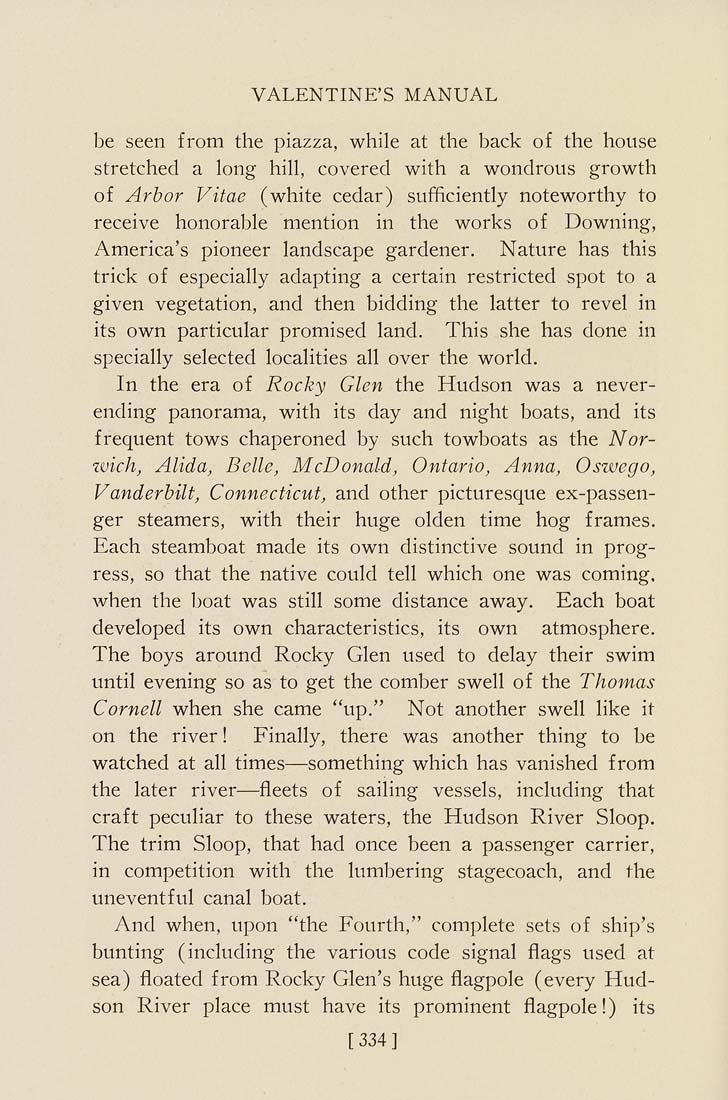VALENTINE'S MANUAL
be seen from the piazza, while at the back of the house
stretched a long hill, covered with a wondrous growth
of Arbor Vitae (white cedar) sufficiently noteworthy to
receive honorable mention in the works of Downing,
America's pioneer landscape gardener. Nature has this
trick of especially adapting a certain restricted spot to a
given vegetation, and then bidding the latter to revel in
its own particular promised land. This she has done in
specially selected localities all over the world.
In the era of Rocky Glen the Hudson was a never-
ending panorama, with its day and night boats, and its
frequent tows chaperoned by such towboats as the Nor-
wich, Alida, Belle, McDonald, Ontario, Anna, Oswego,
Vanderbilt, Connecticut, and other picturesque ex-passen-
ger steamers, with their huge olden time hog frames.
Each steamboat made its own distinctive sound in prog-
ress, so that the native could tell which one was coming,
when the boat was still some distance away. Each boat
developed its own characteristics, its own atmosphere.
The boys around Rocky Glen used to delay their swim
until evening so as to get the comber swell of the Thomas
Cornell when she came "up." Not another swell like it
on the river! Finally, there was another thing to be
watched at all times—something which has vanished from
the later river—fleets of saUing vessels, including that
craft peculiar to these waters, the Hudson River SIoop.
The trim Sloop, that had once been a passenger carrier,
in competition with the lumbering stagecoach, and the
uneventful canal boat.
And wlien, upon "the Fourth," complete sets of ship's
bunting (including the various code signal flags used at
sea) floated from Rocky Glen's huge flagpole (every Hud-
son River place must have its prominent flagpole!) its
[334]
|








